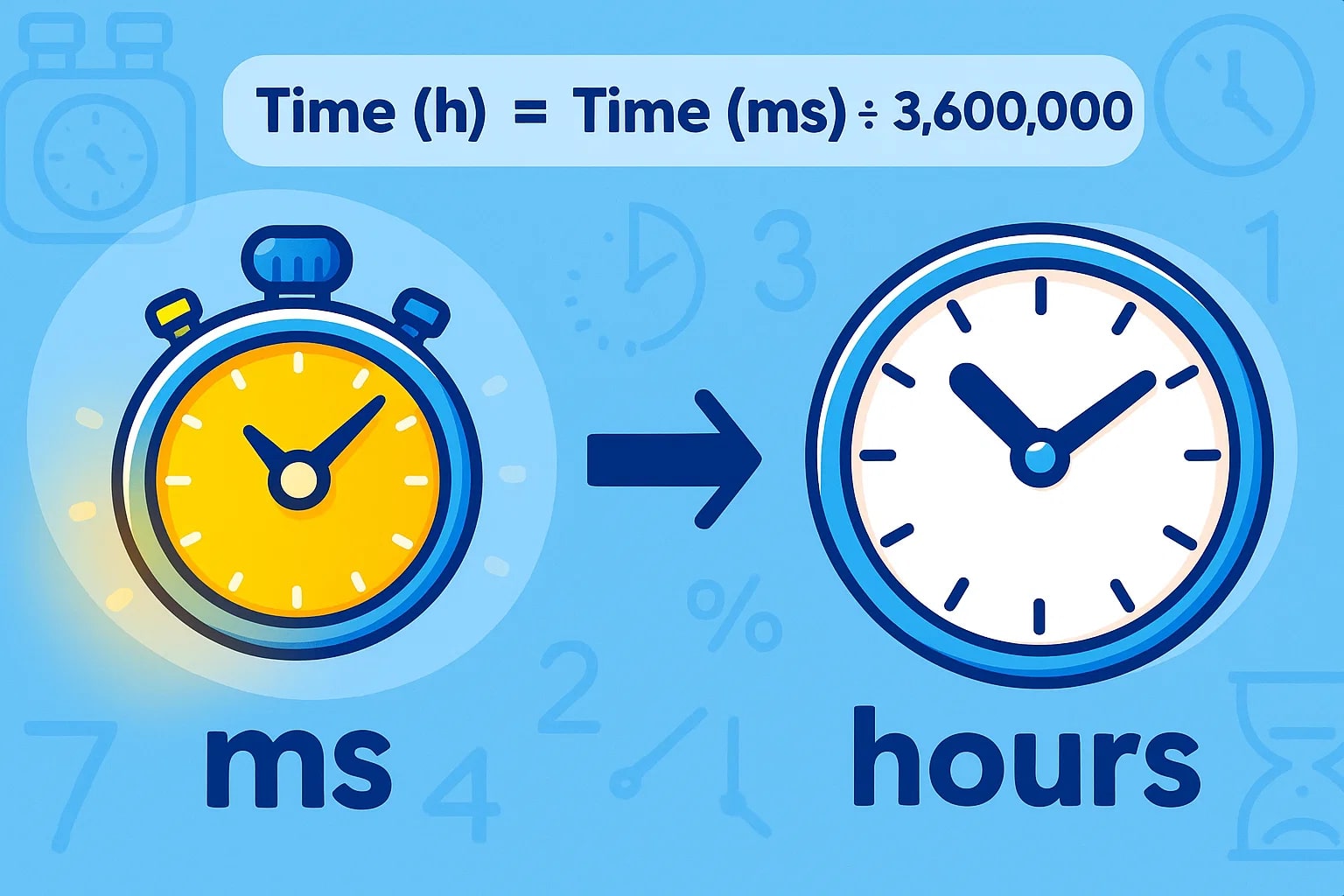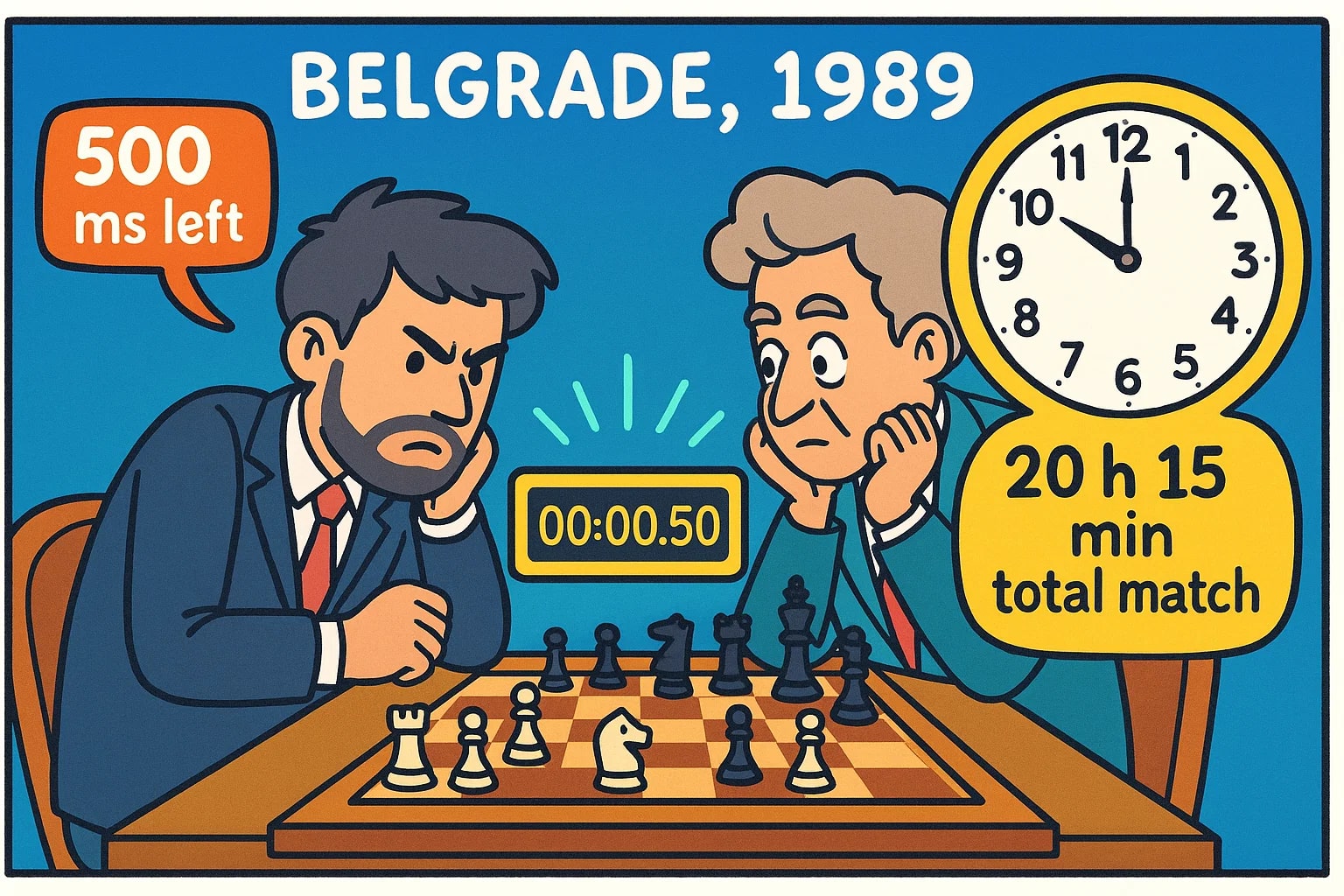millisecond to hour - How to convert ms to h
From lightning-fast reactions to long-running schedules, being able to convert millisecond to hour connects the tiniest slices of time with the hours we live by. Whether for sports, technology, or project planning, this conversion helps you understand the relationship between micro precision and the bigger picture.
What is a Millisecond (ms)?
A millisecond is 1⁄1,000 of a second. It’s often used in high-precision scenarios — think reaction times in sports, network latency, or the shutter speed of a high-end camera. In the span of just a few milliseconds, a race can be won, a stock trade executed, or a server response completed.
What is an Hour (h)?
An hour is a time unit equal to 60 minutes, or 3,600 seconds. In milliseconds, that’s 3,600,000 ms. We use hours every day — for work shifts, travel times, event durations, and more.
How to convert milliseconds to hours
To convert ms to h, divide the millisecond value by 3,600,000.
Time (h) = Time (ms) ÷ 3 600 000
Example:
7,200,000 ms ÷ 3,600,000 = 2 h
This means that every 1 hour equals 3,600,000 milliseconds.
If you want to skip the math and get instant results, our Time Converter or Conversion Tools can handle this and many other time unit conversions in seconds.

Do you know?
-
In Formula 1 racing, pit crews can change all four tires in about 2 seconds — just 2,000 ms — yet a race can last for over 2 hours.
-
The fastest recorded chess move in a professional match took less than 500 ms, while some matches stretch for 10 – 20 hours in total playtime.
-
In elite swimming, the difference between gold and silver can be under 50 ms, but athletes train for hours daily to perfect their timing.
The World’s Longest Chess Match — Milliseconds That Shape Hours
In 1989, in Belgrade, two grandmasters — Nikolić and Arsović — faced off in what became the longest official chess match in history. It lasted a staggering 20 hours and 15 minutes over 269 moves, ending in a draw.
While the match itself stretched for hours, each move was tracked on a clock measuring milliseconds. Those milliseconds determined whether a player lost on time or earned a few more moments to think. In intense positions, a player might have just 500 ms left to make a decision, knowing that one wrong move could waste hours of careful play.
The balance between rapid, split-second decisions and the slow, strategic unfolding of the match mirrors how milliseconds and hours interact in real life — short bursts of speed influencing the flow of much longer periods.

Beyond the Hands of Time
The lesson from the chessboard is universal: milliseconds can decide the outcome of hours-long efforts. In technology, server response logs may measure downtime in milliseconds, but the total outage might last hours. In manufacturing, a millisecond delay in a machine sensor could lead to hours of halted production.
When you can convert millisecond to hour, you make it easier to see the relationship between micro actions and macro results. It’s the kind of perspective that helps in planning, analysis, and decision-making — whether you’re managing a project, improving performance, or simply satisfying curiosity about time.

